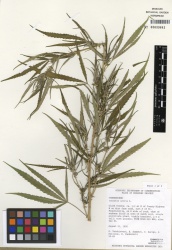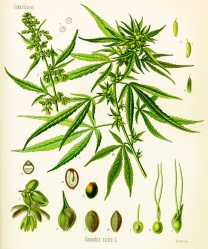| Cannabis spp.
Internal Standard Solution: 1 mg/mL 4-androstene-3,17-dione in a mixture of chloroform and methanol (1:9).
Test Sample Preparation: 100 mg ground plant material in 3 mL of Internal Standard Solution, macerate at room temperature for 1 h,sonicate for 5 min, filter, and use the filtrate.
Column: 15-m x 0.25-mm, 0.25-um film, J&W Scientific DB-1
Oven Program: 170°C for 1 min, increase to 250°C at 10°C/min, hold at 250° for 3 min.
Injection Port: 240°C
Detector: FID, 260°C
Carrier Gas: Helium
Injection volume: 1 uL
Source: National Center for Natural Products Research, School of Pharmacy, University of Mississippi, University, MS 38677, USA [6]
|
|
|
|
 |
 |
 |
 |
|
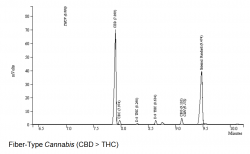
Source: National Center for Natural Products Research, School of Pharmacy, University of Mississippi, University, MS 38677, USA[7]
|
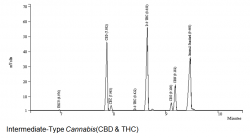
Source: National Center for Natural Products Research, School of Pharmacy, University of Mississippi, University, MS 38677, USA[8]
|
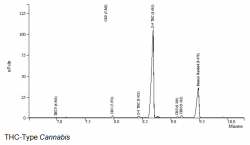
Source: National Center for Natural Products Research, School of Pharmacy, University of Mississippi, University, MS 38677, USA[9]
|
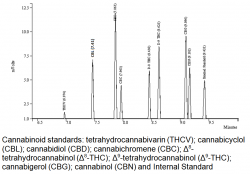
Source: National Center for Natural Products Research, School of Pharmacy, University of Mississippi, University, MS 38677, USA[10]
|
[[Category:National Center for Natural Products Research, School of Pharmacy,
University of Mississippi, University, MS 38677, USA]] [[Category:National Center for Natural Products Research, School of Pharmacy, University of Mississippi, University, MS 38677, USA]] [[Category:National Center for Natural Products Research, School of Pharmacy, University of Mississippi, University, MS 38677, USA]] [[Category:National Center for Natural Products Research, School of Pharmacy, University of Mississippi, University, MS 38677, USA]]
|
